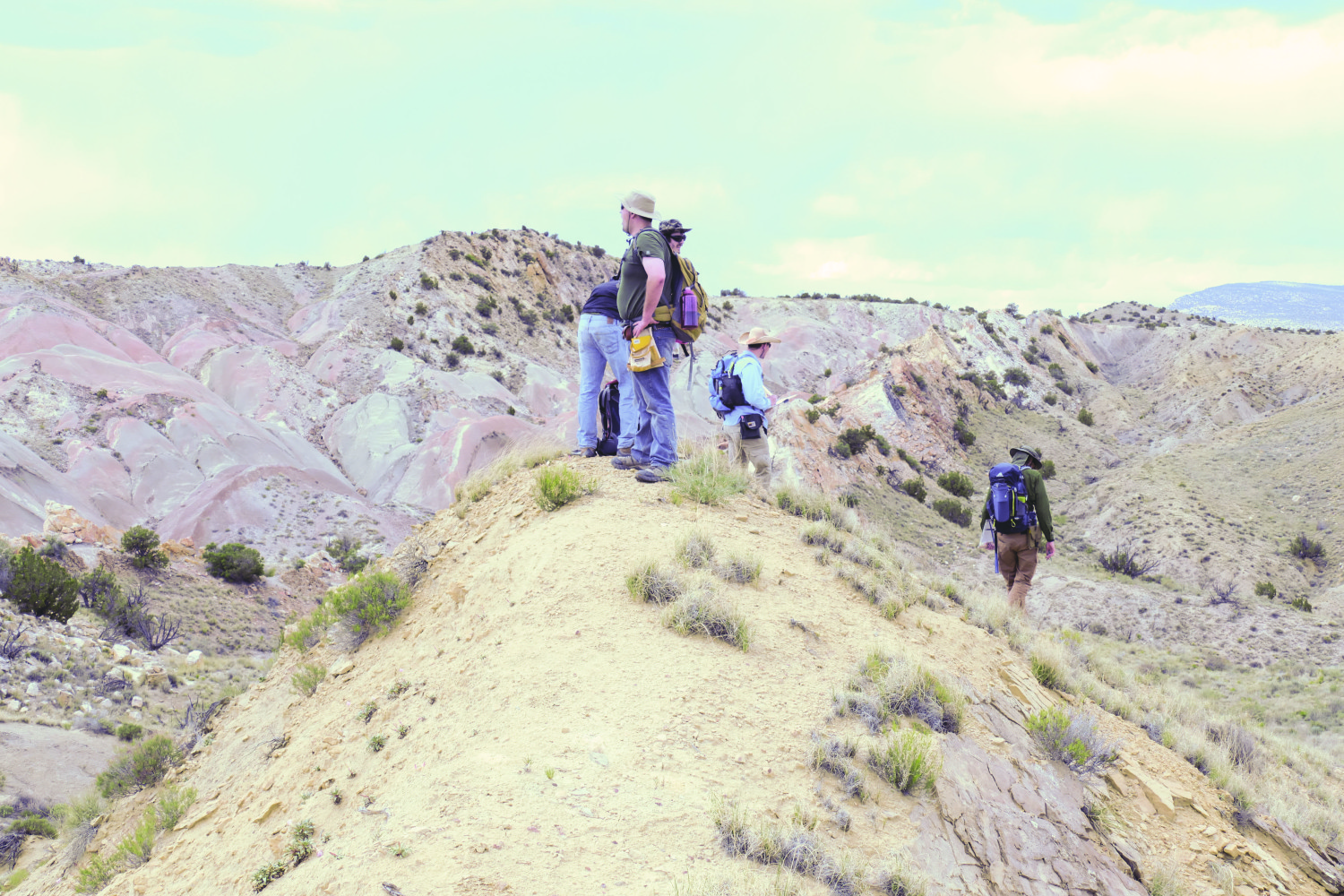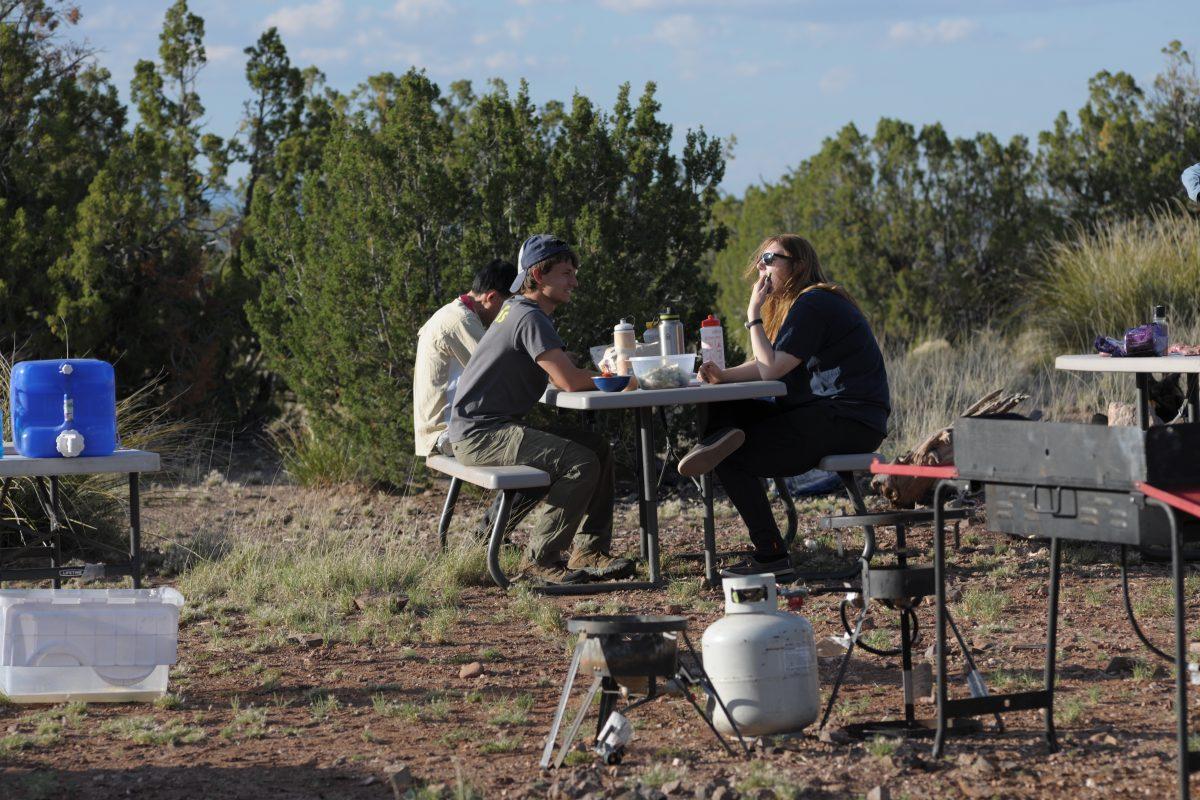John Geissman awoke in his tent at 3:05 a.m. to the excited snarls of an animal near his campsite in the Beartooth Mountains.
A human scream turned his blood cold.
He grabbed his headlamp before exiting the tent, forcing down an instinctive fear telling him to stay silent, to stay hidden.
In the night, the geoscience professor could make out an immense, brown form, hunching over a student, tearing into his hands.
Geissman and another instructor chased the animal away using their headlamps, waving their arms to appear much larger than they were.
The enormous grizzly bear, blood on his jaws, lumbered away, slipping into the shadows of the night.
The student, of another university, lived thanks to the rapid response of the medevac crew. Geissman walked away from the experience reaffirmed in his outdoors philosophy.
“The bottom line is, you try to think about what could go wrong and always be thinking about what could go wrong,” he said. “And in doing so, you’re always cognizant of making certain to the best of your ability that what could go wrong doesn’t go wrong.”
It’s the principle he applies and teaches every summer, when he goes out into the mountains to conduct an introductory field geology course for geoscience students at UTD.
“You Can’t Do It In a Laboratory”
John Geissman, the program head of geosciences, has an experience with field geology that long predates his time on campus.
Geissman has taught field camp since the summer of 1974. Since coming to work at UTD six years ago, he’s traveled into the mountains with students every summer.
“The field experience has always been a critical element in the undergraduate instruction of geoscience majors,” he said. “I’m talking about really immersing the students in working out in the field.”
Without the field camp, he said, most students wouldn’t understand much about geoscience.
“You can’t do it in a laboratory for the geosciences,” Geissman said. “We can’t duplicate (the geologic processes) in a laboratory.”
He said the best part of the experience is seeing students finally understand what they’ve been learning in classrooms all year by observing the geology first-hand.

“(My favorite is) watching students become far more cognizant of how geologic processes work once they see relations in the field,” Geissman said. “It’s not just opening up a textbook and reading about something. It’s about exploring — figuring out things on your own.”
“In the Field It’s Not Always Clear-Cut”
Geoscience junior Siloa Willis took part in introductory field geology this summer, driving from Dallas to New Mexico and then to Colorado. She was one of 13 people in the class.
She said going to field camp was an important part of the geoscience curriculum because it afforded her a greater understanding of what geology looks like out in the real world.
“A textbook can only teach you so much, and a textbook is all perfect situations,” Willis said. “There were so many times when there were faults … because in the field it’s not always clear-cut.”
Once in the field, students are assigned several mapping projects, said Geissman. They are sent out into the mountains — usually in pairs — to record what they see in the area. Later, the students write up an interpretive report of their observations and finalize their map.
“We provide the students with a lot of feedback during the course, while they’re out in the field conducting their mapping,” he said. “The instructors are always out there interacting with the students.”
In addition to the rigorous course material, Willis said the physical expectations of the camp were exceptionally demanding.
“(You have) a heavy backpack and on top of that you’re hiking vertically up a mountain,” she said. “It’s a long day. … That was the hardest thing, for sure.”
All the same, Willis said she had a great time camping out in nature and spending time with her cohort.
“You can see the stars at night,” she said. “When you’re a city kid, you can’t even imagine how many stars are out there.”
For geoscience senior Jillian Kelley, the social aspect of the course was the most rewarding.
“It’s a bonding experience, because you go through a lot together,” she said.
Paying Your Way
The UTD field camp requirement consists of two three-credit hour classes, taken over the course of two summers. Each class runs between $3,350 and $3,550 per student. The cost of each class includes a set tuition — about $2,050, as dictated by the university — and a course fee — between $1,300 and $1,500, as dictated by the geology department to cover food and transportation.
“It’s not just opening up a textbook and reading about something. It’s about exploring — figuring out things on your own.” – John Geissman, Program Head of Geoscience
Kelley said she felt frustrated by the cost of the course because a former geoscience advisor told her that her Academic Excellence Scholarship would defray the cost of tuition.
“I’m not blaming him — it’s my fault for not being on top of that too,” she said. “It was … unorganized on his part.”
She said she was upset field camp and its cost was not addressed earlier in her college experience. Kelley found out about the requirement junior year.
In addition, because the class is only three credit hours long, and the duration of the class prevents students from taking most other summer classes, it is nearly impossible for students to obtain federal student aid — which is distributed starting at six credit hours.
Once she found out she’d need to pay for field camp out of pocket, Kelley worked more hours at her part-time job and began saving scrupulously.
“It was stressful, but it had to be done,” she said.
Every year, through alumni support, the department is able to give out about $18,000 in scholarships for undergraduates going to field camp. The scholarships generally range from $750 to $1,500, Geissman said.
“If a student doesn’t apply for these scholarships — and they’re well advertised … they don’t get any money,” he said. “But everyone who does apply, does get financial aid from the department.”
Although every applicant is guaranteed financial assistance, he said only about 50 percent of the students attending field camp apply.
“If I have 20 students in the field course, that’s … $26,000. We barely break even in terms of transportation costs and food costs,” Geissman said. “The big thing is, our department bends over backwards to try to provide financial support for our students.”
Although the department offers those scholarships, both Willis and Kelley said they did not find out about them in time to apply. They plan to look into them for next summer’s field requirement.
“You can’t even imagine how many stars are out there”
It was long past midnight. Willis was pulling an all-nighter with a classmate to finish a mapping project in her tent in Colorado, the Rocky Mountains looming above the campsite in the moonlight.
Frustrated, she left the tent to take a walk and clear her head.
She looked up. Spanning above her, in gold and white and purple swirls, the Milky Way cut across the wide expanse of the sky. Awestruck, she ran back to the tent and dragged her homework partner outside.
Their legs ached from the hiking. Their clothes were dirty from days of wear. In the distance, a lantern lit up their tent, where maps and geology books and pencils, worn down to nubs, waited for them to return.
“We stood there for ten minutes looking at the Milky Way,” Willis said. “And we were like, ‘Ah, life is not that bad.’”







